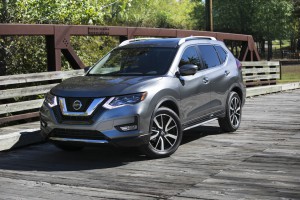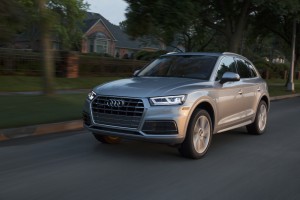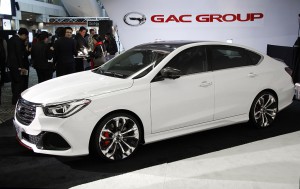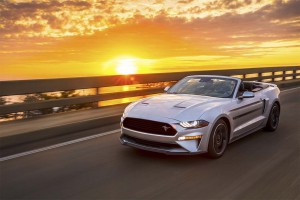
Demand for the latest version of Nissan's Rogue has contributed to an increase in imports from Japan.
When Toyota and Mazda open a new assembly plant in Alabama in 2021, it will become the latest in a growing array of automotive plants Japanese manufacturers have set up in the U.S. since the mid-1980s – yet despite investing billions in their American operations, Japanese manufacturers have also been increasing exports to the U.S. from their home market factories.
The number of Japanese-made vehicles imported into the U.S. rose almost 10% during the first quarter of 2018. And Japan wasn’t alone. Auto imports, as a whole have actually been on the rise, whether from Korea, Europe or Mexico, the latter country shipping about 7.5% more vehicles to the U.S. in March than the year before – despite Pres. Donald Trump’s high-profile push to bring more auto production back to the States.
“Japan sends us million and millions of cars, and we tax them virtually not at all. And we don’t send so much product because we have trade barriers and lots of other things,” the president complained during a news conference this week while standing alongside Japanese Prime Minister Shinzo Abe.
Trump has made automotive trade a high-profile issue ever since launching his campaign. He initially took aim at Ford Motor Co., in April 2016 warning the carmaker not to go ahead with plans to transfer small car production from a factory in Michigan to an all-new plant in Mexico. The president subsequently spotlighted other manufacturers for importing vehicles, including both General Motors and Toyota.
Mexico is a relatively new arrival among major auto-producing countries, global manufacturers investing billions in that country over the last decade to take advantage of a mix of low wages, the proximity to the U.S. and other key markets and an array of tariff-shaving free trade deals. Audi is one of the latest to arrive, the carmaker using a new Mexican plant as its sole global source for the latest version of its popular Q5 SUV.
While Trump initially threatened Mexico with “big tariffs,” he has so far held off on specific moves meant to limit its auto exports to the U.S. That could be addressed in the tri-country talks aimed at revising NAFTA.
(Where do things stand on NAFTA negotiations? Click Here to find out.)
Automotive trade with Japan, meanwhile, has been a hot-button target for decades. In 1981, the Japanese agreed to supposedly voluntary restraints limiting auto exports to the U.S. to 1.68 million vehicles a year. That jumped to 2.3 million in 1985, about the same time the first Japanese-owned assembly plants opened in the States. The so-called VRA, or voluntary restraint agreement, was dropped in 1994.
And, if anything, the addition of new assembly plants actually resulted in a cutback in imports. During the fiscal year that ended on March 31, 2018 about 1.76 million Japanese-made vehicles were shipped to the States, a bit more than the original VRA allowed, but 23% less than the 1985 revised target.
But the figure has been trending in the wrong direction, at least for the liking of the Trump Administration, increasing by 10% for the January to March quarter compared to a year ago. Of more concern: the value of Japanese auto imports has nearly doubled over the past six years, according to a Wall Street Journal report, “driven by hunger for sport-utility vehicles,” which carry a much higher price tag than comparably sized sedans and coupes. As a result, those imports accounted for 30% of the value of Japan’s exports to the U.S. overall during the most recent Japanese fiscal year.
Demand for SUVs has impacted the American trade balance with a number of countries, whether Mexican-made Audi Q5s or Japanese-made Toyota RAV4 and Nissan Rogue models. Utes makes up about half of the total American new motor vehicle market right now, a share still growing, and a number of manufacturers have either struggled to meet demand with their American plants or have based global production sourcing elsewhere, as Audi did with its new Mexican plant.
On the other hand, sales of SUVs have been growing globally, and that’s also played to the benefit of the U.S. BMW, for example, is now the largest exporter of American-made vehicles, relying on its Spartanburg, South Carolina plant that is the sole source of some of its X-model Sport-Activity Vehicles. Mercedes-Benz exports a significant share of its utility-vehicle production at a plant in Alabama.
But, on the whole, the trend has been shifting towards more auto imports into the U.S. since Trump took office.
There have been some minor victories in the president’s push to shift production back to the States, though primarily in terms of automotive parts and components. Ford did cancel plans to build its second Mexican plant and subsequently decided against building small car models like the Focus in that country, as well. But rather than bring the Focus back to the States, it will transfer production to China when an all-new version of the vehicle debuts.
And China could be the next big source of automotive imports. Volvo is already importing a small number of extended-wheelbase S90 sedans and General Motors’ Buick division imports the Chinese-made Envision SUV. Both makers are expected to expand sourcing from China in the coming years. But the big wave is likely to come with the arrival of domestic Chinese brands. They’ve been threatening to land in the States for a decade but GAC appears set to become the first, the Guangzhou automaker now lining up dealers for a distribution network expected to debut in 2019.
Part of the broader problem is that U.S.-made vehicles have yet to make much inroad abroad. Efforts to set up markets in Japan have largely failed, Ford pulling out of that market entirely in 2016, declaring that it saw, “no path to sustained profitability.” (Other foreign makers, including Hyundai, have also given up on Japan. Korea has liberalized its auto import rules but the U.S. has gained little traction there, either. Europe imports some American-made vehicles, including German-branded SUVs and specialty vehicles like the Ford Mustang, but the numbers are small.
(China hinting it will roll back auto import tariffs. Click Here for the latest.)
As for China, the current 25% import tariffs on auto imports means only specialty models have much demand, and then at low volumes. Chinese buyers purchased barely 300,000 American-made vehicles in 2017, the bulk of them German-badged. Earlier this month, President Xi Jinping announced that China would scale back those tariffs, though hard details have yet to follow. And considering the massive automotive manufacturing base in that country, few expect to say a major surge in imports, even if the tariff was lowered to match America’s modest 2.5% figure.
Trump’s angry comments during the joint news conference with Japanese Prime Minister Abe show that he remains determined to bring more auto production back to the States, but whether the country’s trade partners will cooperate is less certain, and recent trends have not moved in the right direction.
(Ford slides, GM coasts in China. Click Here for more.)




Remember, Trump has more cruise missiles.